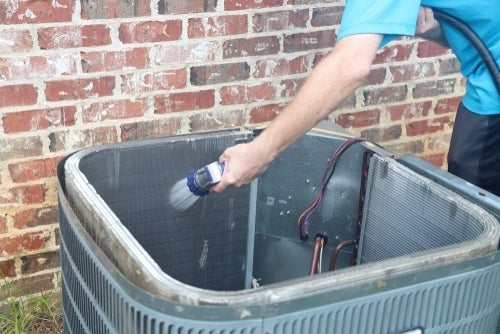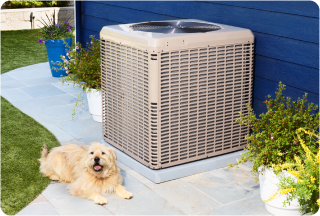How to Recharge Your Home A/C Unit and How Much It Costs

Having issues with your home A/C unit and wondering whether you need to repair or replace it? Learn everything you need to know about recharging your A/C unit and how much it costs.


Having issues with your home A/C unit and wondering whether you need to repair or replace it? Learn everything you need to know about recharging your A/C unit and how much it costs.
When the summer season rolls around and the thermostat rises, the air conditioner becomes the most important system in the house. These hardworking systems keep us cool and comfortable despite the heat, but what do you do if they start to malfunction?
Here is everything you need to know about how to recharge an A/C unit, as well as signs that it may be time for a replacement.
What does “recharging your air conditioner” mean?
When you hear someone talking about recharging an A/C unit, they are talking about adding more refrigerant to the unit and ensuring the refrigerant is properly pressurized within the refrigerant system.
If you need refrigerant for your air conditioner, you’ll need to contact a professional heating and cooling technician. Under EPA regulations, only a certified professional can recharge your home’s HVAC system. You should never try to recharge the A/C yourself, even if you have a home air conditioner recharging kit. The refrigerant used can be harmful to you and the environment if it’s not handled properly.
How do I know if my home A/C needs to be recharged?

There are a couple of ways you’ll know if you need an A/C recharge:
How often do you need to recharge your A/C?
The refrigerant systems within A/C units are sealed. This means that home A/C units are designed not to require a recharge unless a leak develops in the refrigerant system. So, unless you notice a problem, a home A/C recharge isn’t needed.
What does a typical A/C recharge cost?
The cost to recharge a home A/C depends on the cause of the refrigerant leak and refrigerant prices, which are dependent on the unit and your location. The average retail price of refrigerant is $67 per pound, and most units require up to 10 pounds, so your A/C recharge costs could be up to $670.
If extra work is required to repair the cause of the leak, that may be an added expense.
Thinking about coverage?
Security for your home. Protection for your budget.
When should I replace my A/C unit?
You may be better off replacing your leaking air conditioner instead of trying to recharge it—because even the best A/C units don’t last forever. Here are some signs that you may need a new A/C unit:
Learn more about HVAC replacement costs to determine whether or not a replacement will be more cost-effective.
How do I extend the life of my A/C?

Like any appliance or home system, routine maintenance is the key to extending your air conditioner’s life span. Here are some tips:
However, even with regular maintenance, sometimes parts of your A/C unit will malfunction. When you invest in a home warranty from American Home Shield®, you can rest assured that your budget will be protected in the event of a malfunction of a covered item from everyday wear and tear. Our air conditioner warranty coverage is here to help you if you need an A/C recharge. The ShieldSilver™ and ShieldGold™ plans cover up to $10 per pound of refrigerant, no matter how much you need. ShieldPlatinum™ plan members can enjoy unlimited refrigerant coverage at no additional cost. Check out our home warranty costs and plans for more details and choose the best plan for your household and budget.
Get more home repair and maintenance ideas on the American Home Shield® blog.
Explore how our home warranty plans can help keep your A/C in working order all season long.

AHS assumes no responsibility, and specifically disclaims all liability, for your use of any and all information contained herein.
Have a plan for your home when things don't go according to plan
Shop Home Warranties